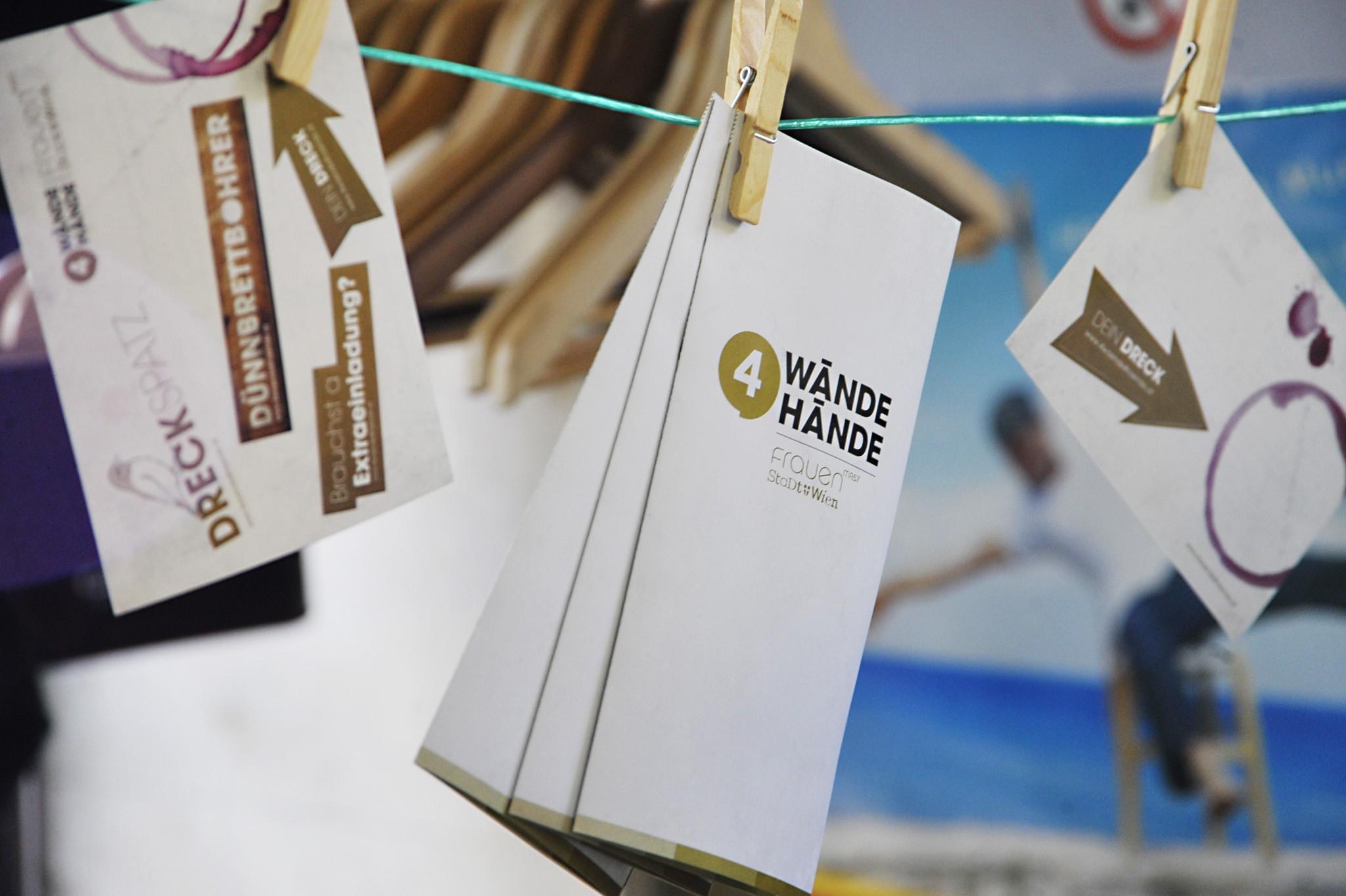
Four Walls – Four Hands
In brief
The “Four walls – Four Hands” awareness-raising campaign represents a very good example of a campaign to change awareness about women’s and men’s roles in the family. The campaign used electronic and social media to raise awareness about the unequal distribution of domestic work and to highlight and stimulate debate about the unequal sharing of care work. It includes tools for couples to monitor and compare their contribution to domestic work.
The microsite www.4waende4haende.at was launched with videos, plans for sharing domestic work and childcare-related work to be printed and filled in by couples, a Facebook app and a survey. A smartphone app for monitoring domestic chores on the individual level is provided as well as a Facebook page. The campaign was accompanied by advertisements and free cards.
The campaign
The campaign “Four Walls – Four Hands” was presented to the Austrian public on the city’s Equal Pay Day, 19th October 2012, on the basis that the unequal distribution of domestic work impacts on the gender pay gap. The campaign ran between October 2012 and October 2013.
The City of Vienna Women’s Department initiated and carried out the campaign. The primary data for the campaign were based on a survey of domestic work and drew on the results from a time budget survey in 2008/2009. The practical design and launch of the campaign was carried out by the agency Modul4.
"Even in the 21st century do women two-thirds of unpaid family and domestic work. Women are solving the problems that society has ignored. The more unpaid work is done, the less time for work and leisure. Participating in society requires free time. The division of domestic and care work is not purely a private matter, but a matter for society as a whole," said Martina Wurzer, speaker of the Vienna Greens, at the campaign launch.
The campaign focused on electronic and social media. It included tools that enable couples to monitor and compare the contribution they make to domestic work. The project created the microsite www.4waende4haende.at, which contained videos, plans for sharing domestic and childcare-related work which couples could print and fill in, a Facebook app and a survey. A smartphone app to allow individuals to monitor their domestic chores was offered and a Facebook page was created.
At the times of highest use, there were 156,651 users per week and 488 users discussed the campaign regularly. The Facebook site has over 2,500 likes. Of the users, 65% were female and 34% male; 34% were in the age group 25-34 and 21% in the age group 25-44. A significant number of users downloaded the app (IOS 1,086 downloads, Android 1,018). The 8,707 users of the microsite www.4waende4haende accounted for 33,266 page impressions. The campaign was accompanied by advertisements and free cards. Although the campaign was launched by the Viennese authorities, it was also used in other provinces across Austria.
An innovative element is the multimedia design combining apps, a microsite, printed material and social media. Furthermore, the social media tools could not only be watched or read, they could be actively used as was the case with the household plans to be filled in by couples.
Many benefits
The objectives of the campaign were to stimulate discussion and reflection on fairness regarding the division of paid and unpaid work between the genders and the consequences of current inequalities; to increase the visibility of the existing disadvantages with regard to distributive justice; to support autonomous lifestyles independent of narrow role expectations; to support diverse and positive role models for children and young adults, and to communicate the advantages of a fairer distribution of care work for both genders. Other objectives were higher satisfaction, better health, more leisure time, fair distribution of time with children, strengthening the emotional bonds between parents and children, better work-life balance and, as a future perspective, children growing up in an equal and fair society.
The campaign was designed in a humorous, playful way with games and tools, and social media was an important factor in reaching young people. For transferability, household chores listed in the tools would have to be adapted to other cultural contexts.
Contacts
SORA Institute for Social Research and Consulting
Modul4 Kommunikations GmbH | Capistrangasse 4 | 1060 Vienna
Further information
More on good practices
Downloads
-
Using social media to campaign on domestic work - Austria
- Language
- EN
- File type and size
- PDF, 267.77 KB